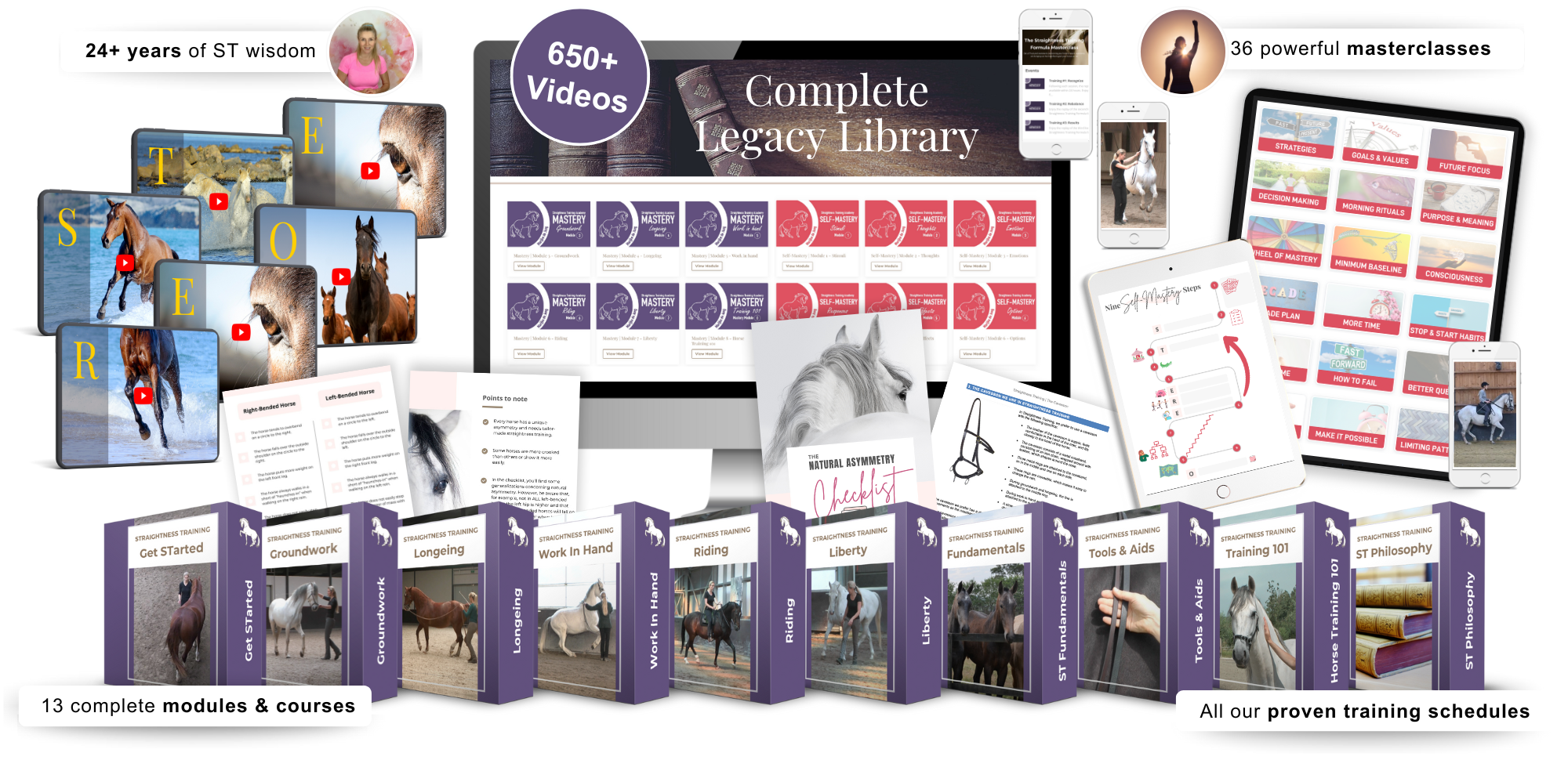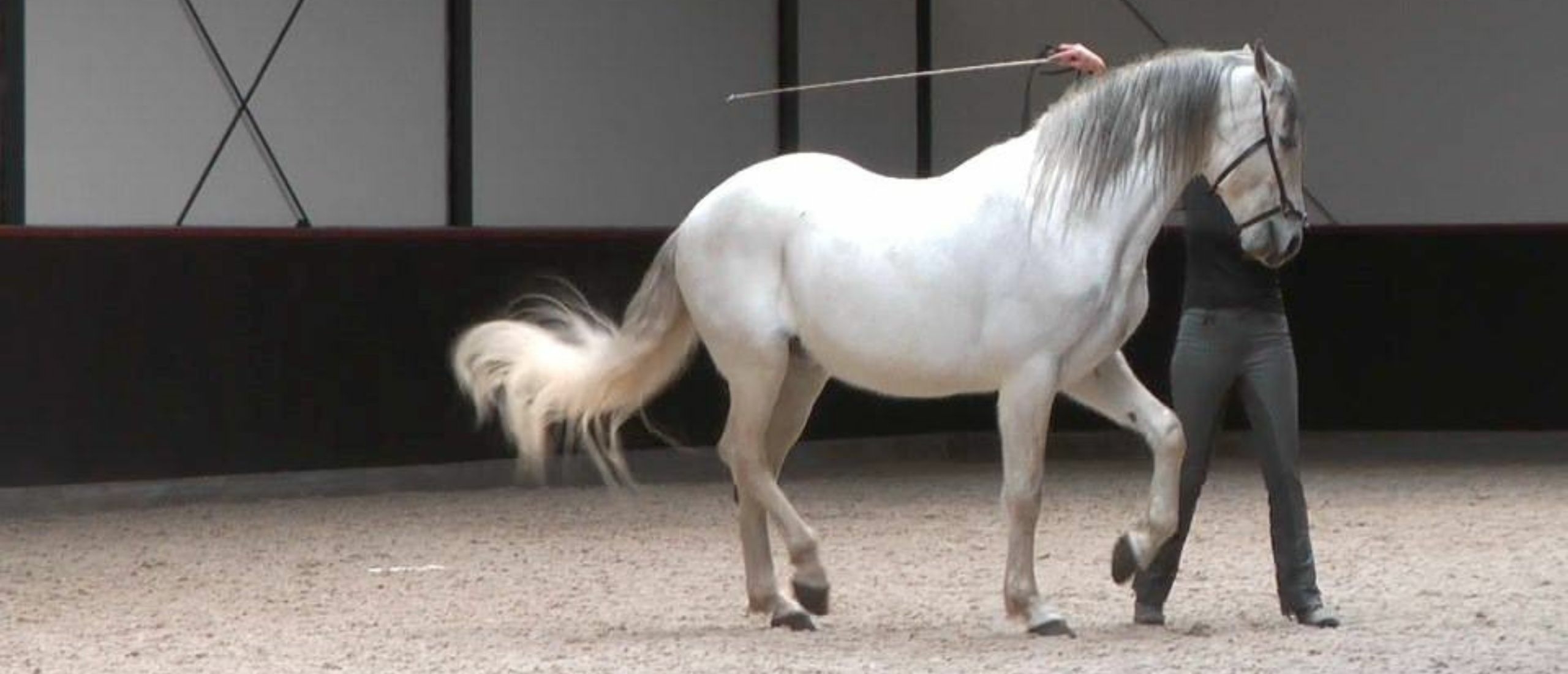
Groundwork
Groundwork is a very important training pillarof Straightness Training.
Once a young horse has been prepared for his life with humans due to the basic training for a three-year old, we can start with groundwork.
Also, for an older but uneducated horse or a stiff senior horse, groundwork is a good thing to start with in Straightness Training.
With groundwork exercises, our horse learns to respond to the aids.
This prepares our horse for longeing, work in hand and riding. Groundwork is done using a cavesson and a longe line.
The line is attached to the middle ring of the cavesson. This way, the young horse is easy to handle without harming/disturbing the mouth.
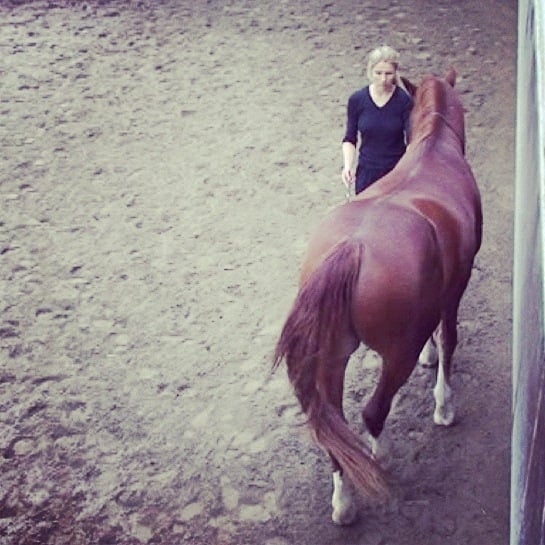
Basic Exercises
Basic groundwork consists of the following exercises:
1. Leading
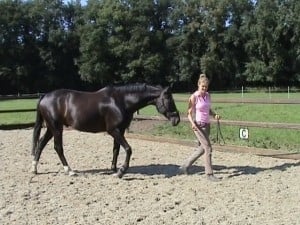
Our horse needs to follow us as its leader. We walk in front of the horse, slightly to the side (so we can keep an eye on your horse). Our horse follows us based on respect and trust. When our horse tries to pass us or stops, we should change directions immediately. When our horse is pushy and gets into our personal space, we can create space by using the end of your rope as a sort of tail.
2. Stop
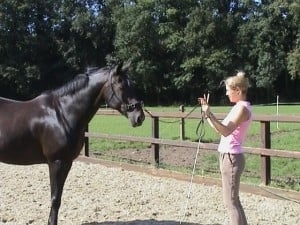
When we stop, our horse should make the same movement and stop as well. In the end, we should be able to do this exercise with our back turned towards our horse. If our horse does not stop immediately it is recommended to first stop while facing the horse while keeping 2 or 3 meters (7 to 10 feet) distance. Then make yourself bigger and if necessary lift your arms.
3. Back up
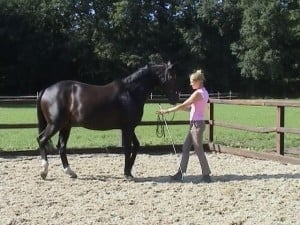
Put some gentle pressure on the nose and chest of your horse and ask it to step backwards. If your horse moves away from the pressure, release and reward your horse and give a moment of relaxation. The goal is to be able to give pressure without even touching your horse so that it moves backwards, away from your energy.
4. Standstill exercises
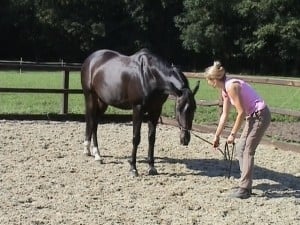
In nature, a higher position of head and neck is linked to mental excitement while a forward down tendency is visible in relaxed horses. In this position (with the head down), the horse cannot make adrenaline. Ask the horse to move away from a slight pressure behind the ears. If the horse lowers the head, immediately remove the pressure and reward your horse and give a moment of relaxation.
After forward down, we can ask for stelling. Stelling is a Dutch word, used to describe the bending of the head to the left or right in relation to the first vertebrae of the spine. The lower jaw of the horse should move underneath the extensions of the atlas vertebra which is the first vertebra in the neck of the horse. A proper stelling creates therefore a bigger space behind the lower jaw. You can ask stelling bit by bit, while the horse should remain standing. If the horse takes the stelling and relaxes, you release pressure as well. You can then see that the stelling continues to work throughout the rest of the neck and in a bending of the spine, making the inner hip come forward..
5. LFS
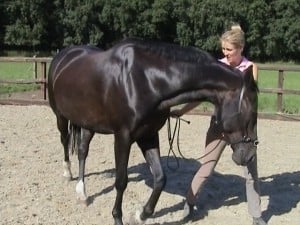
The next step is to ask for lateral bending, foward down and stepping under in movement:
- Lateral bending: By nature, every horse has a supple and a less supple side, because the muscles are uneven in length. To develop our horse symmetrically, we should ask our horse to walk circles to both left and right. We ask for some stelling and bending, which lengthens the muscles on the outside and the muscles on the inside relax.
- Forward down: We ask our horse to bring his head forward down, to relax the back muscles and tighten the abdominal muscles..
- Stepping under: because of the horse’s natural asymmetry, the horse prefers using one hind leg to push, and the other hind leg to carry. When the horse takes a proper bending to both sides, it will also start using its inside hind leg as the carrying hind leg. In this way, both hind legs develop similar carrying capacity. This is how the horse learns to step under his center of mass, which is important for supporting the rider.
Our horse has now learned to walk in a forward down tendency, bend itself to the left and right and to step under the center of mass.
For here, we can start develop the training pillar longeing.
Or we can teach the horse the more advanced exercises in groundwork.
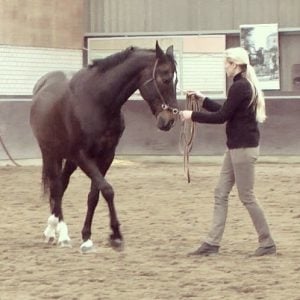
Advanced Groundwork
Advanced groundwork consists of the following straightness training exercises:

The goal of advanced groundwork is to prepare the horse for trouble-free riding and to improve balance, suppleness, coordination and strength.
We can teach your horse all lateral movements in hand from the ground with a cavesson and a longe line.
This video shows you a quick overview the basic and advanced exercises:

